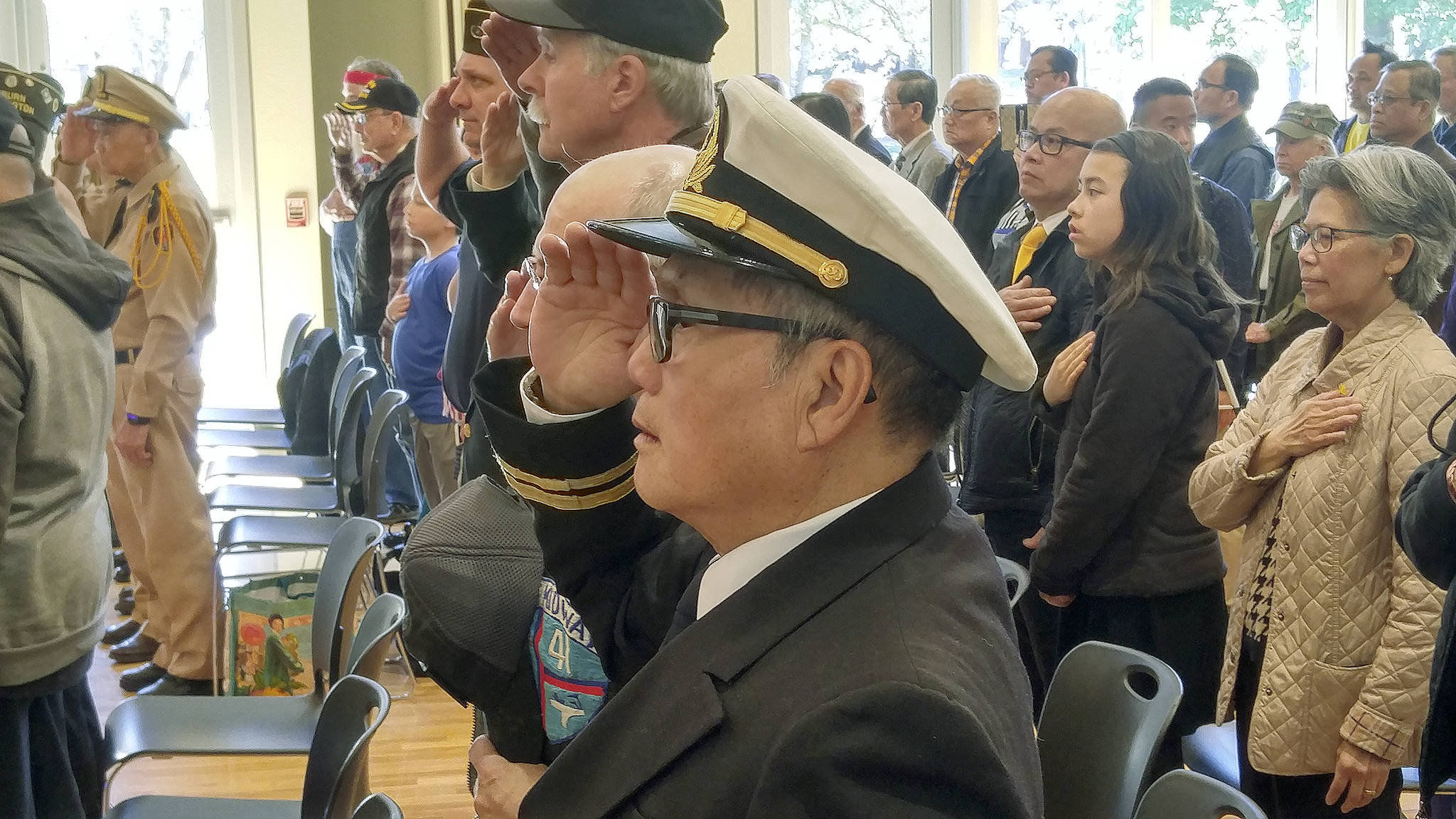The image many Americans carry of the end of the Vietnam War is of a CIA officer helping evacuees up a swinging ladder onto an Air America helicopter on the roof of the apartment building at 22 Gia Long Street in Saigon.
The next day, April 30,1975, when the capital fell to advancing North Vietnamese troops, the war officially ended, having consumed four million Vietnamese and 58,000 American lives.
Tung Tran, then a 7-year-old boy in Saigon with his family and today a software engineer in Bothell, remembered those terrible events and the years that followed, during the Vietnamese community’s 44th Black April commemoration Sunday afternoon in the Auburn Senior Activities Center at Les Gove Park.
More than 100 people, including a generous contingent of former warriors in uniform, took part in the ceremonies, which marked not only the loss of a country but also lives lost before, during and after the war.
“They don’t do that over there, so we have to do it over here, also for South Vietnam military people who died for our country,” explained Tran, past president of the American-Vietnamese Community of Seattle and Sno-King Counties, which hosted the event. “This day is meaningful to remind people of their history, why we are here. We cannot change the history but we can learn from it and move to make the community better and hopefully support a better future for Vietnam.”
Tran said he had come to Saigon with his family that day to avoid the bombing and fighting in the countryside. He recalls how his father had gone out to the port of Saigon on April 30 to look for a way to escape and had to struggle through bedlam. The helicopters, the bombings, the chaos of that day are all incised on his memory.
But Tran said it’s critical to understand what happened after the big guns fell silent.
“That’s where it begins,” said Tran. “What happened was that the winners, the communists of North Vietnam, asked a million people from the South’s military to go to a ‘camp’ for seven to 14 days, but many stayed for 17 to 24 years, without knowing when they were going home. As many as 100,000 died in the concentration camps.
“A lot of people were naîve to think that with the end of the war, peace was probably coming, so they decided to stay with their country, but the winners were set on revenge,” Tran said. “What happened was that for people who were not in the camps, the whole of South Vietnam was basically in jail. We could not do anything, we were from the South. That’s why more than a million people escaped the country after the war. An estimated 50 percent survived the escape. I was one of the boat people eight years later.”
Tran also played a role in bringing the joint Vietnamese-American War Memorial to Les Gove Park.
Former Auburn Mayor Pete Lewis, himself a Navy veteran of the conflict from 1964 to 1968, hadbeen coming to the commemoration for about 20 years when it was in Seattle, but this was the first occasion when it was held in Auburn, in large part because of the new memorial.
“Americans lost the war, Vietnamese lost their country. They all had to leave, and some of them left really fast, but they left behind mothers, fathers, sons and daughters who got sent into concentration camps – they were called ‘re-education camps‘– and up to a million people died,” Lewis said. “It’s a stark reminder for generations of people. It’s one of the reasons we first started talking about doing this, because it’s a reminder for the younger generation of what took place.”
“Americans came back from the war, and spent 20 to 30 years not telling anybody, ever, that they were involved in the war, and the Vietnamese came here, and they were ‘the boat people.’ Today, boat people is a source of pride, but there was a time, when they first got here, it was a source of ridicule,” Lewis said. “There’s been a progression of events where the Vietnamese community, whether American or Vietnam born, come together. The Fall of Saigon, the Black Day, has been a source of community for both.”


